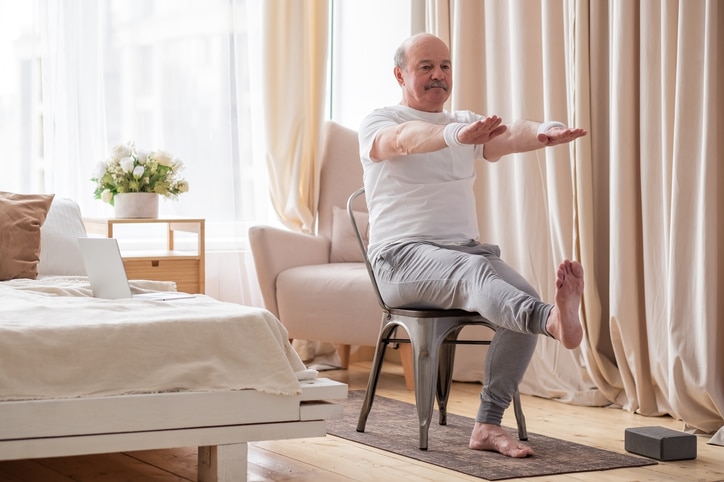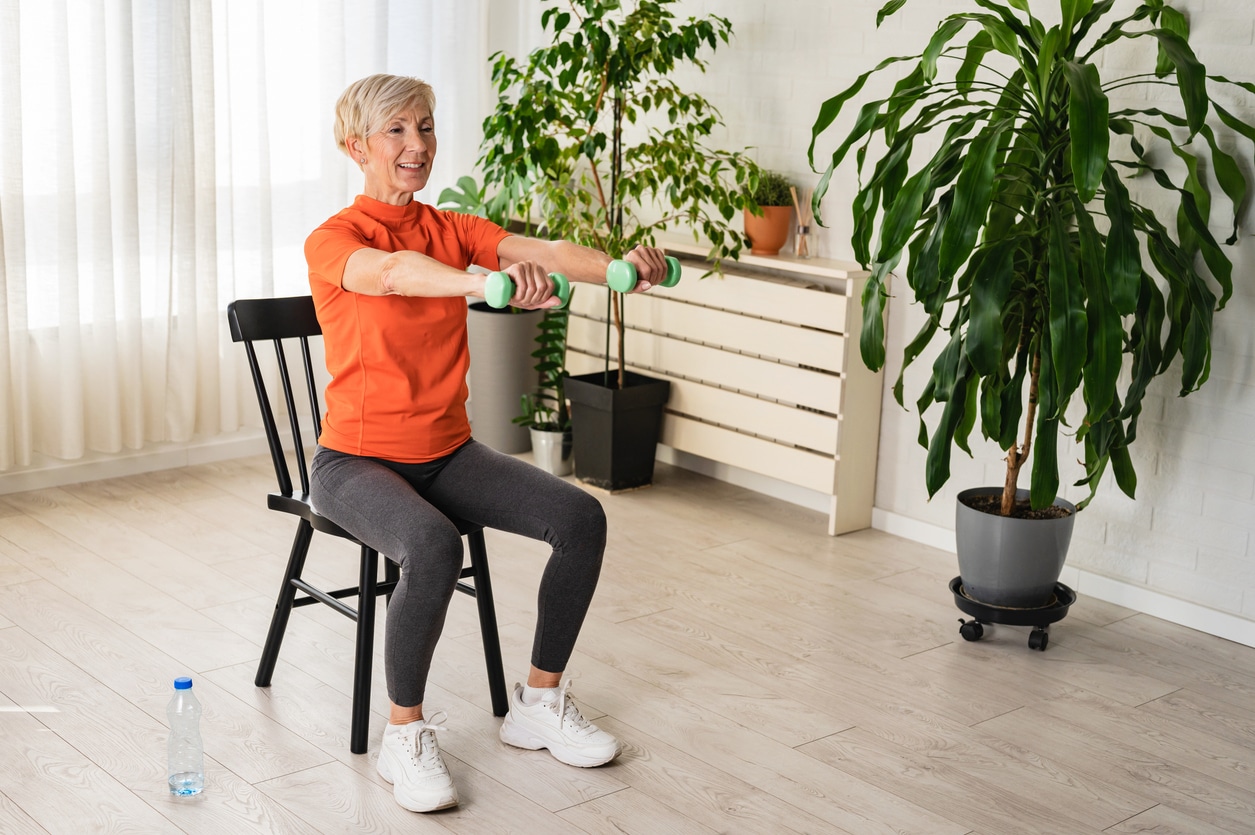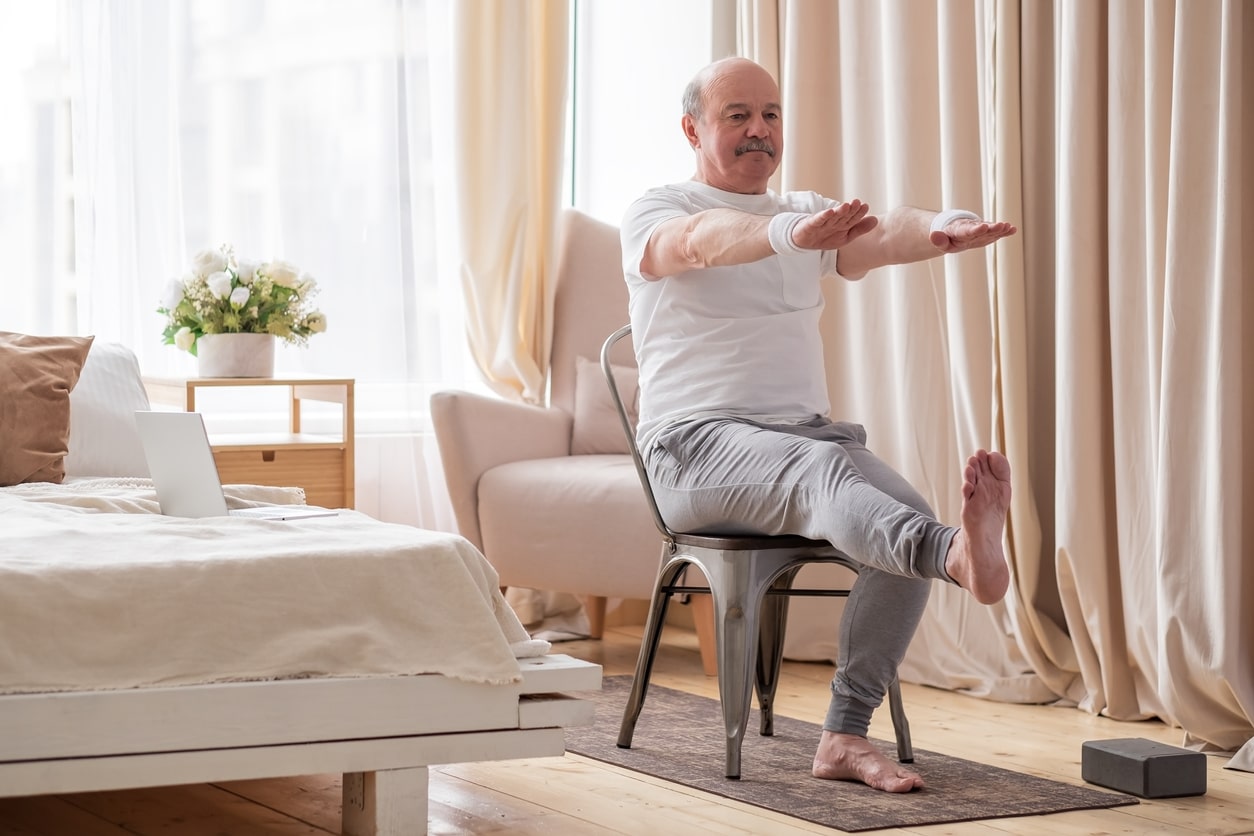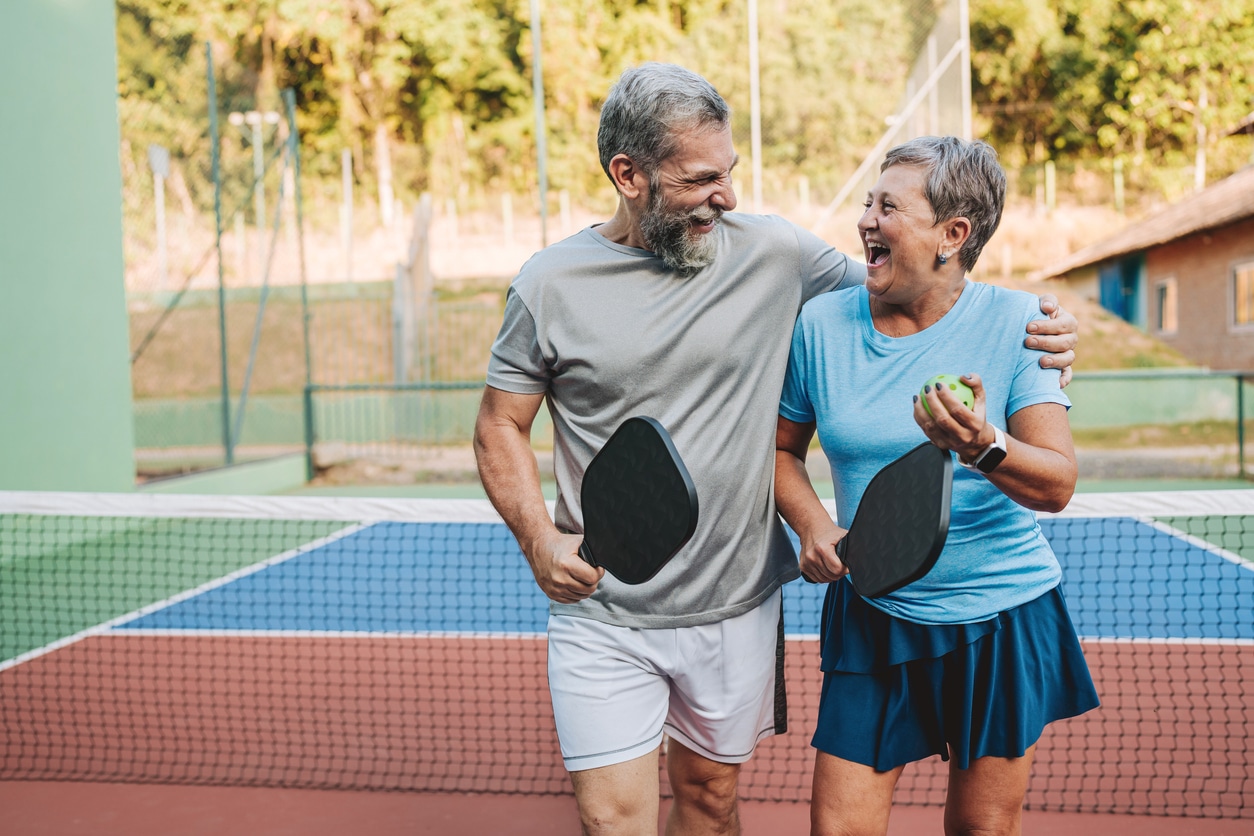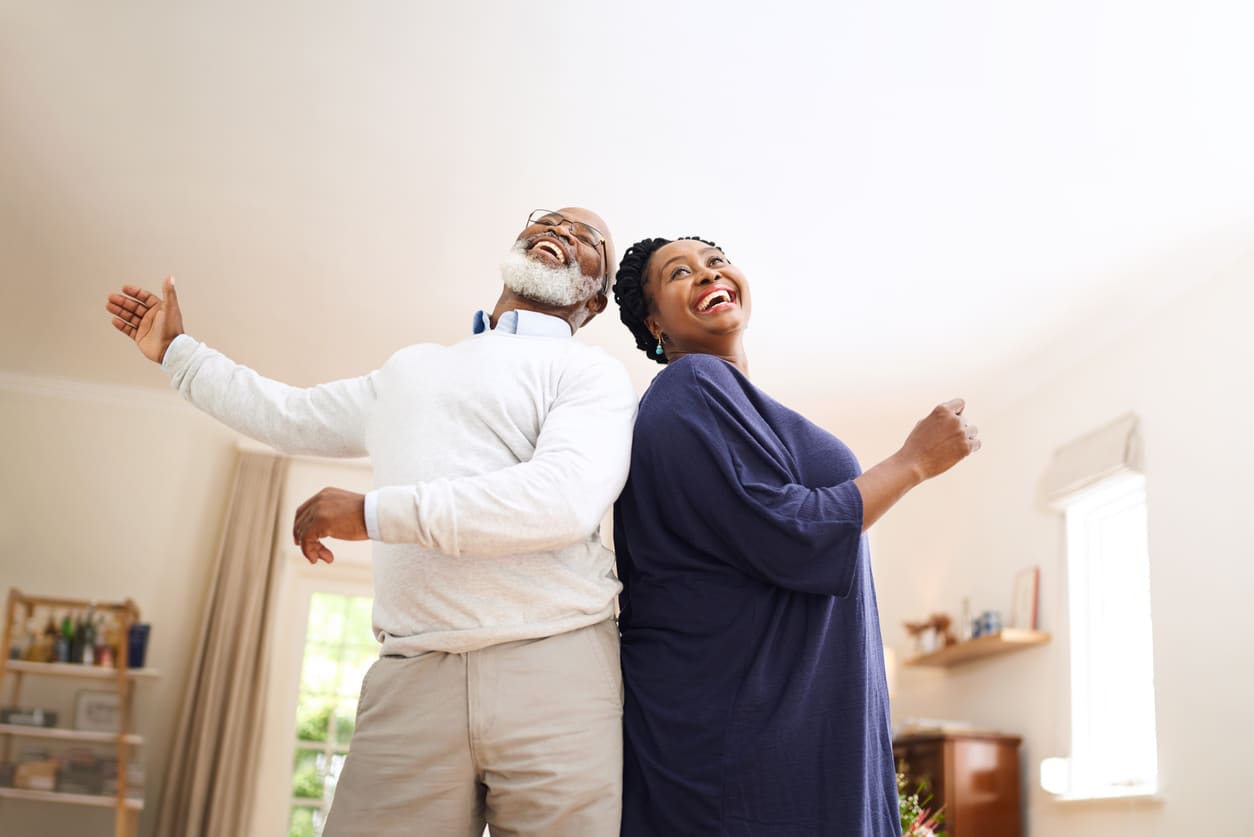Physical activity has immediate health benefits including better sleep and less anxiety, and a reduced risk of serious illnesses such as heart disease, Type II diabetes and depression.. It can also…improve your balance and boost your brain health. — The Centers for Disease Control and Prevention1
Low-impact aerobic activities are gentler on the joints and may make it easier for older adults to stay active. What are some good low-impact exercises? The CDC recommends brisk walking, cycling, swimming, water aerobics, light gardening, group exercise classes and dancing.2
If you’re wondering, “how long should I exercise?”, the CDC suggests these weekly targets suitable for most older adults:
- 150 minutes each week of moderate-intensity aerobic activity or
- 75 minutes each week of vigorous-intensity aerobic activity or
- A combination of both; one minute of vigorous activity equals about 2 minutes of moderate activity.
Remember, it’s always a good idea to check with a healthcare professional to create an exercise program tailored to your needs and conditions.
Let’s take a closer look at the benefits of low-impact exercise for seniors:
Independence and Falls
Doing regular strength, balance and flexibility exercises can help us stay independent and potentially prevent falls. Healthy older adults are encouraged to engage in these activities three times a week in addition to aerobic workouts.3 Using a wearable medical alert system delivers additional security, making it possible to summon help if you do fall or experience an injury — and providing peace of mind to you and your family members.
Social Interaction and Connections
Staying active can also help us stay connected. Participation in group exercise programs can provide stimulation that helps keep loneliness at bay. Most senior centers and many community centers offer low-impact exercise classes created especially for adults over age 65. Some even offer chair-based classes for those with limited mobility. Before you engage in group activities, check the CDC guidelines to ensure you do so safely.4
Convenience and Safety
Even if you don’t go out much, there are low-impact workouts for seniors at home that don’t require a lot of open space, moving around or equipment. If you can afford it, hire a personal trainer who specializes in working with older adults to help you develop an in-home workout routine that makes sense for you. The National Institute on Aging offers a guide for older adults who wish to begin low-impact exercise regimens at home. Before starting, talk with a healthcare professional.
Don’t disregard professional medical advice, or delay seeking it, because of what you read here. This information is not intended as a substitute for professional consultation, diagnosis or treatment; it is provided “as is” without any representations or warranties, express or implied. Always consult a healthcare provider if you have specific questions about any medical matter, and seek professional attention immediately if you think you or someone in your care may be experiencing a healthcare condition or medical emergency.
1 CDC – Making Physical Activity a Part of an Older Adult’s Life. https://www.cdc.gov/physicalactivity/basics/adding-pa/activities-olderadults.htm#:~:text=As%20part%20of%20their%20weekly,%2C%20and%20muscle%2Dstrengthening%20activities. June 2021.
2 CDC – Physical Activity for Arthritis. https://www.cdc.gov/arthritis/basics/physical-activity-overview.html. June 2021
3 Washington State Department of Health, Injury & Violence Prevention Program – https://www.doh.wa.gov/Portals/1/Documents/8390/341-013-SAILguide-en-L.pdf. June 2021
4 CDC – Choosing Safer Activities. https://www.cdc.gov/coronavirus/2019-ncov/daily-life-coping/participate-in-activities.html. June 2021
